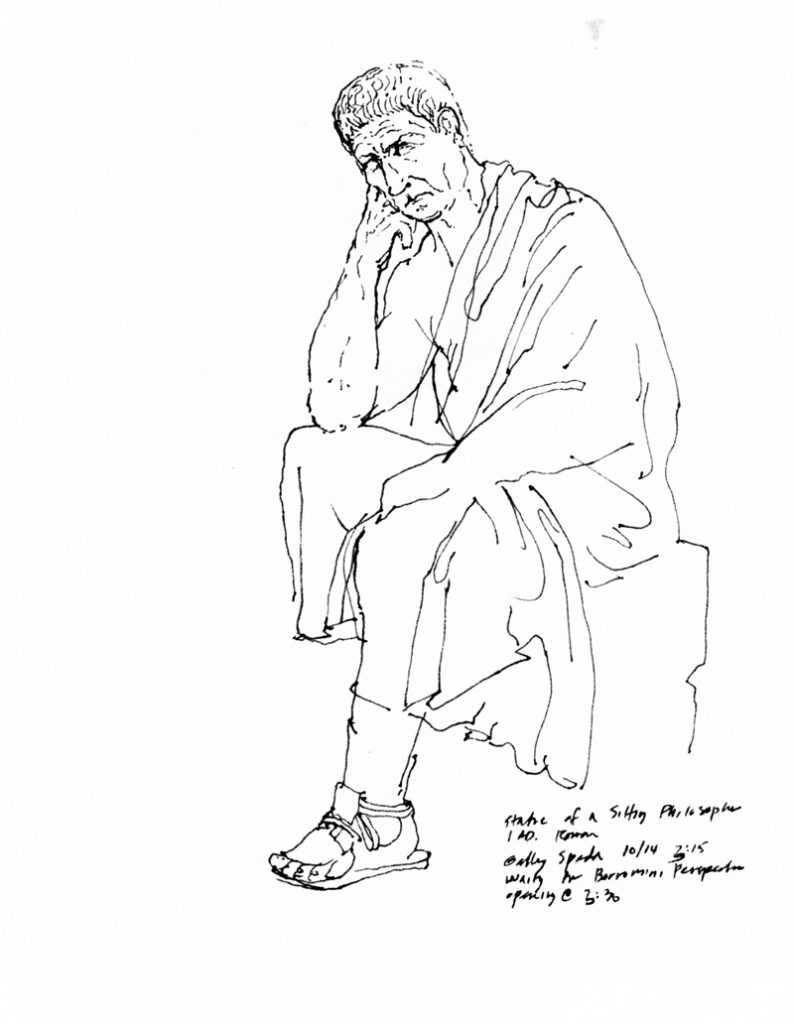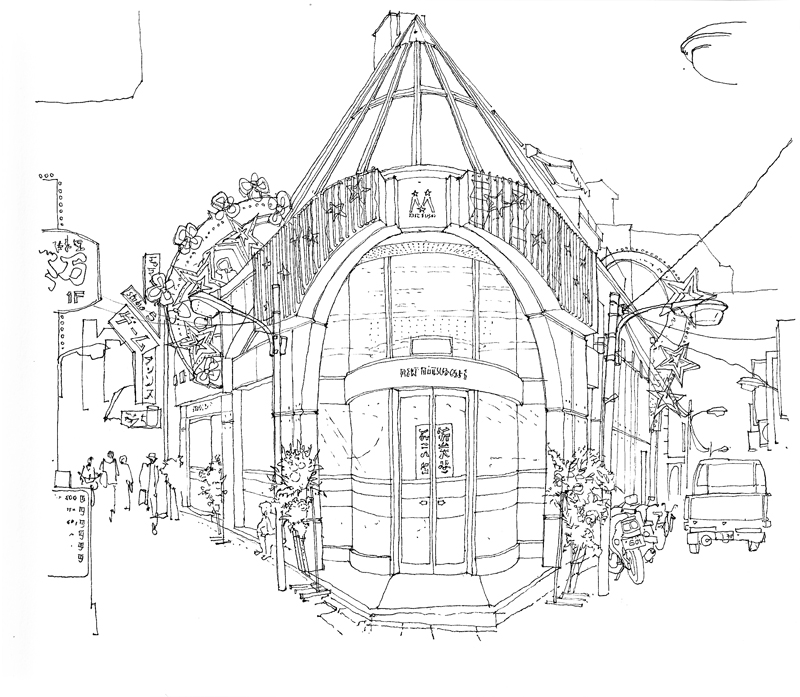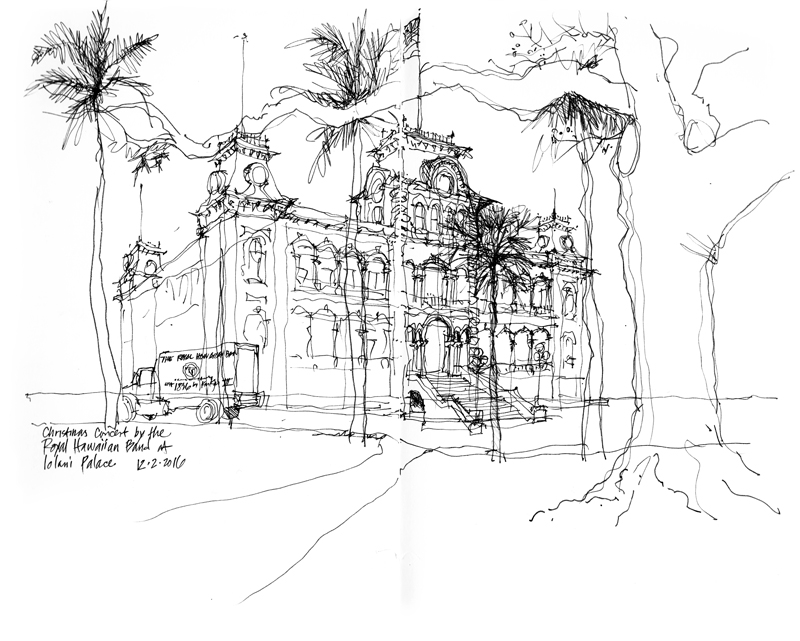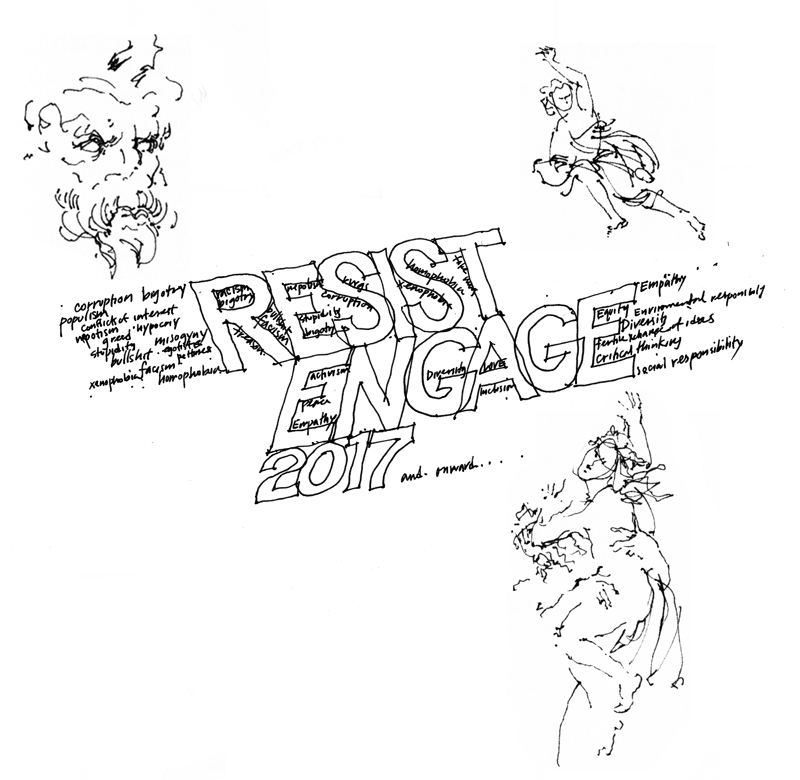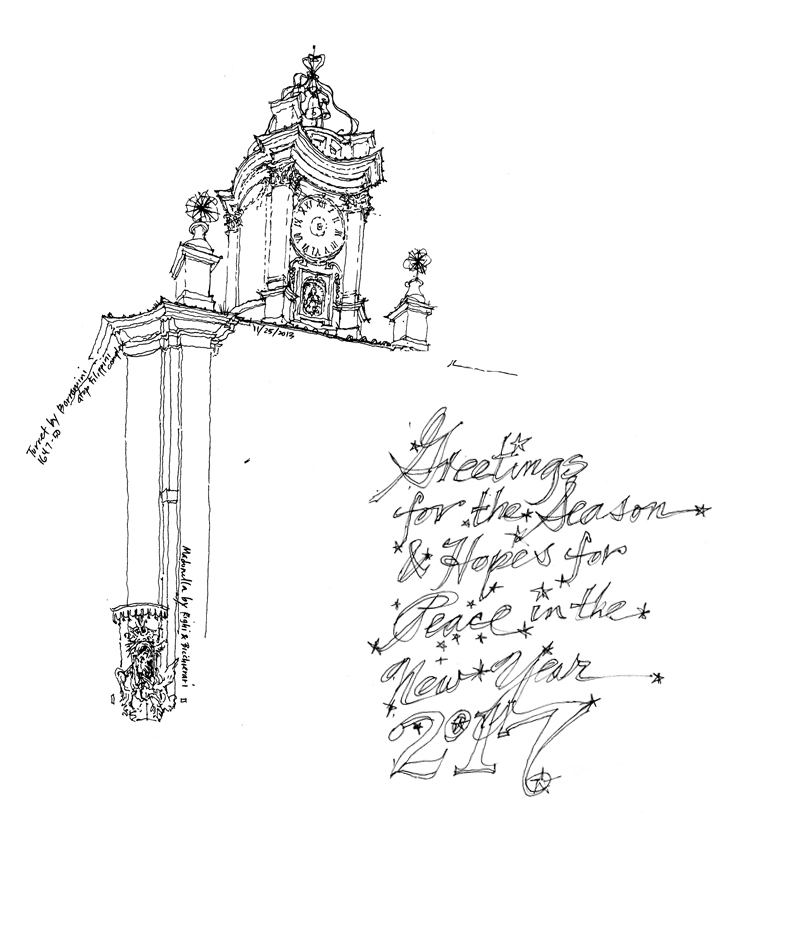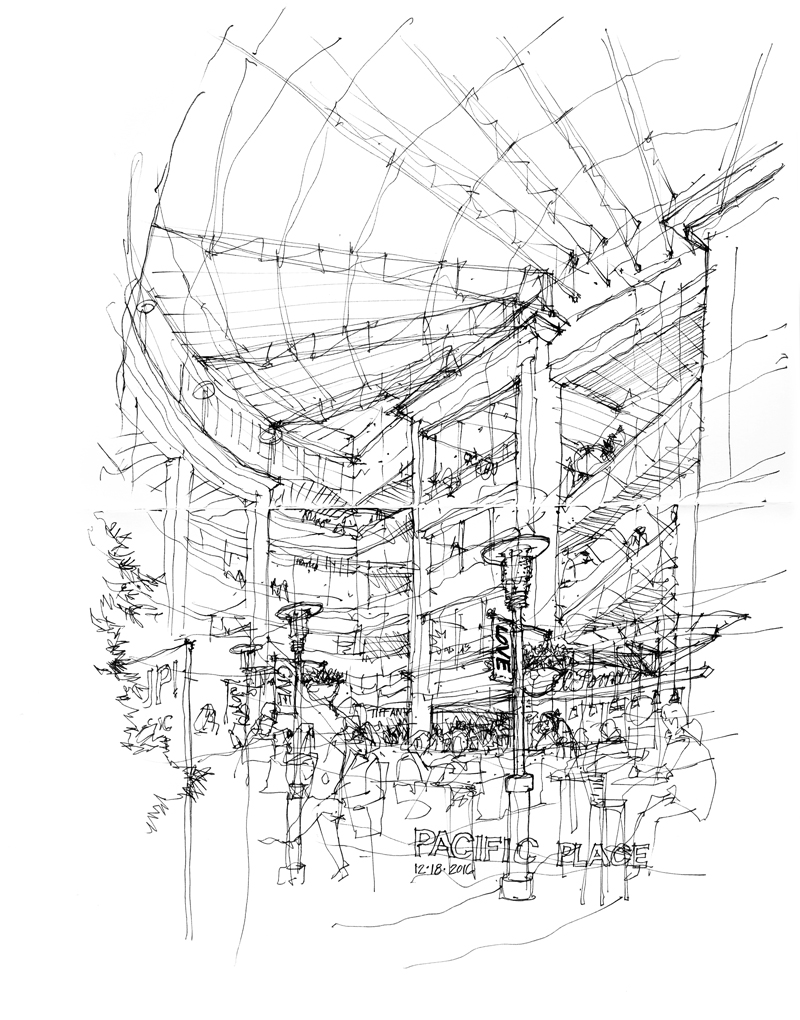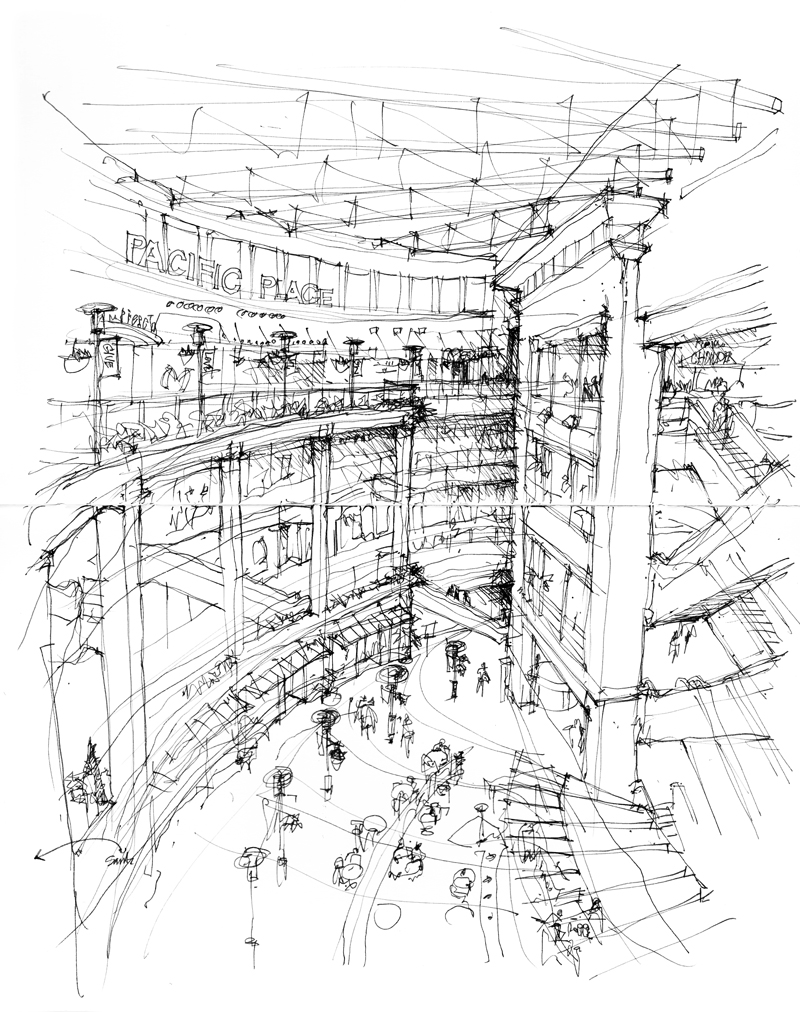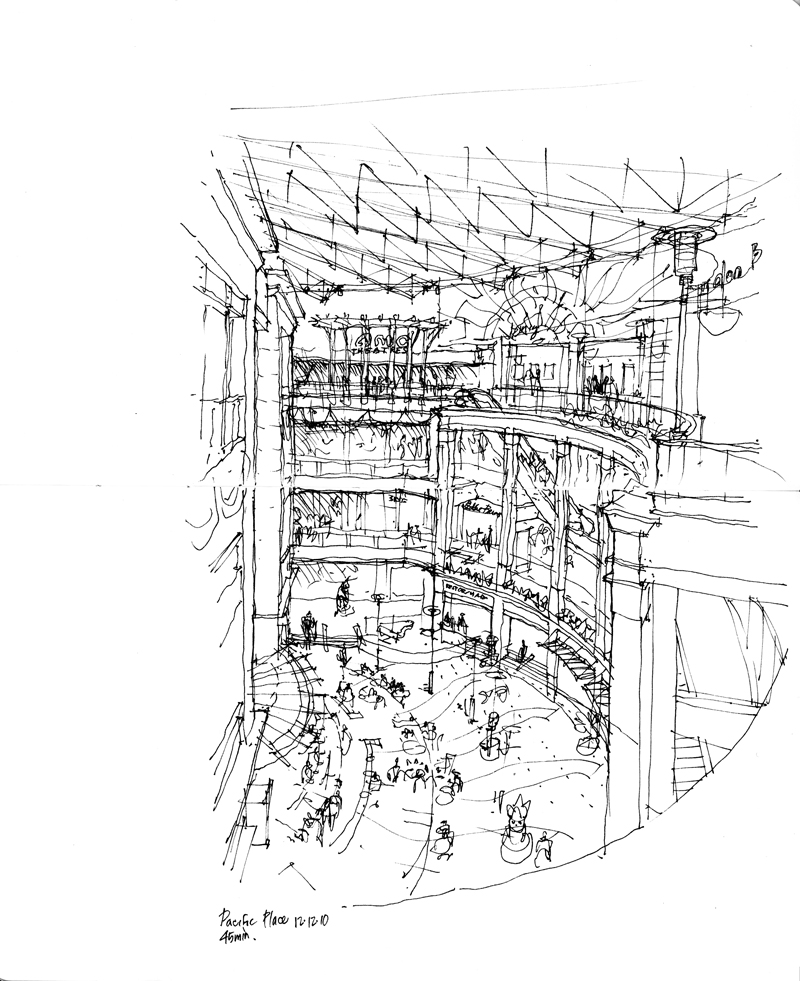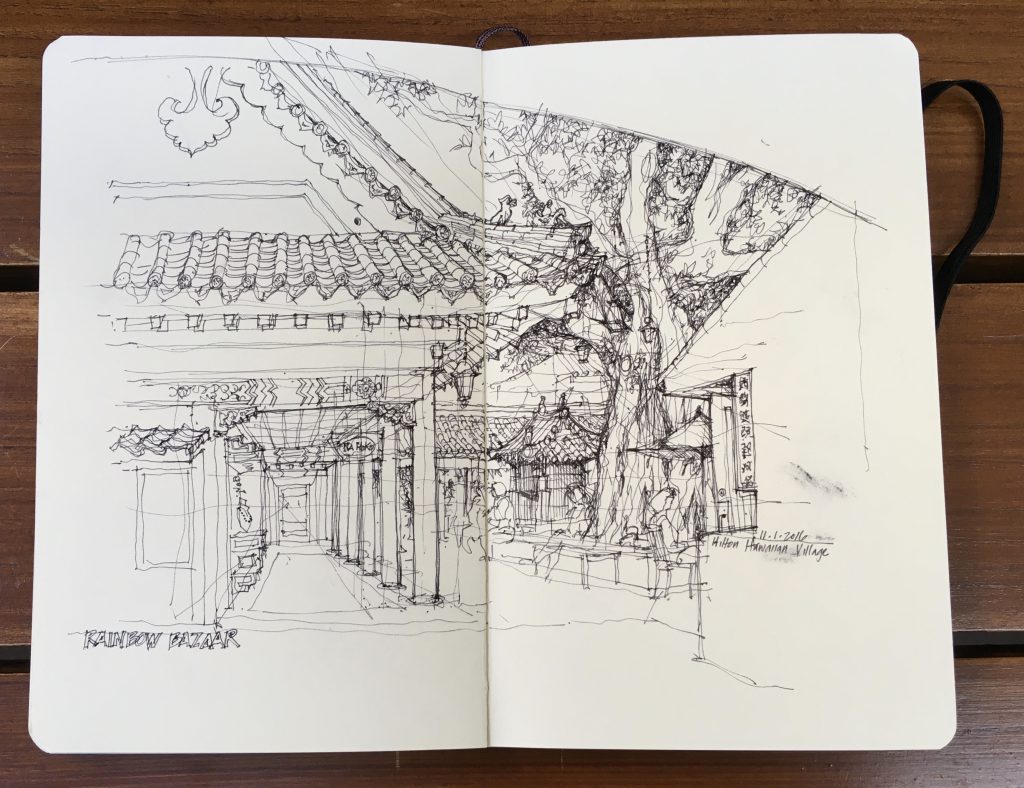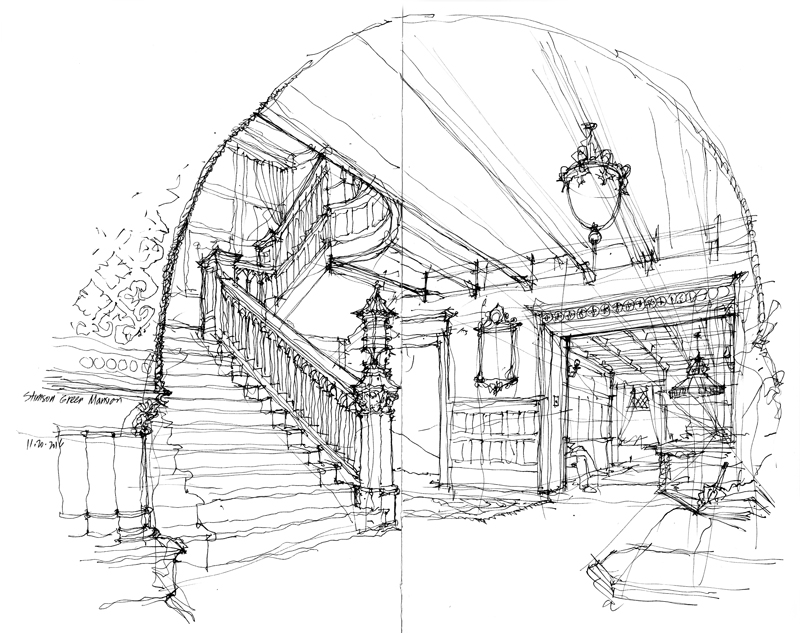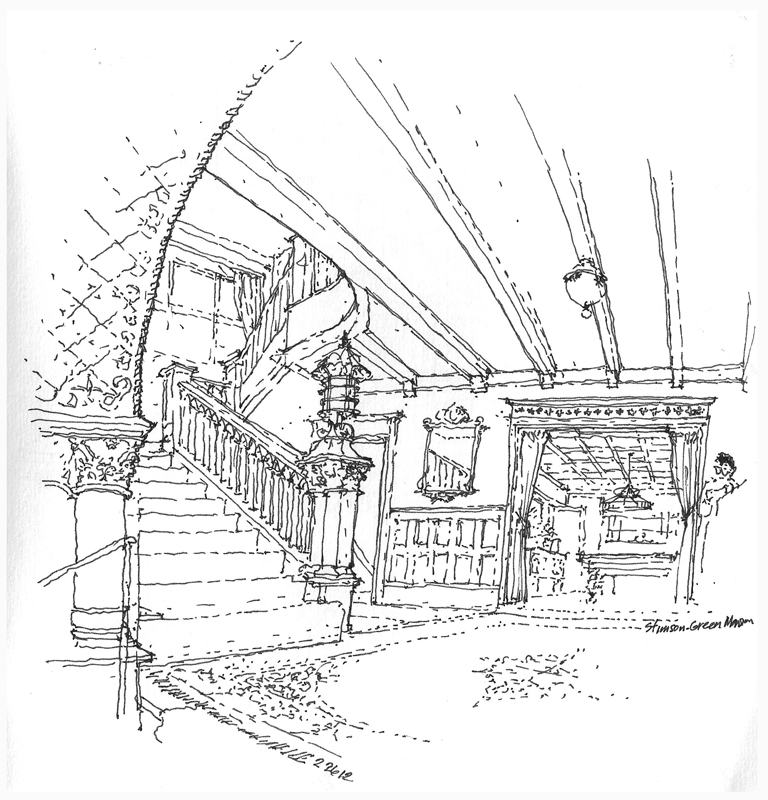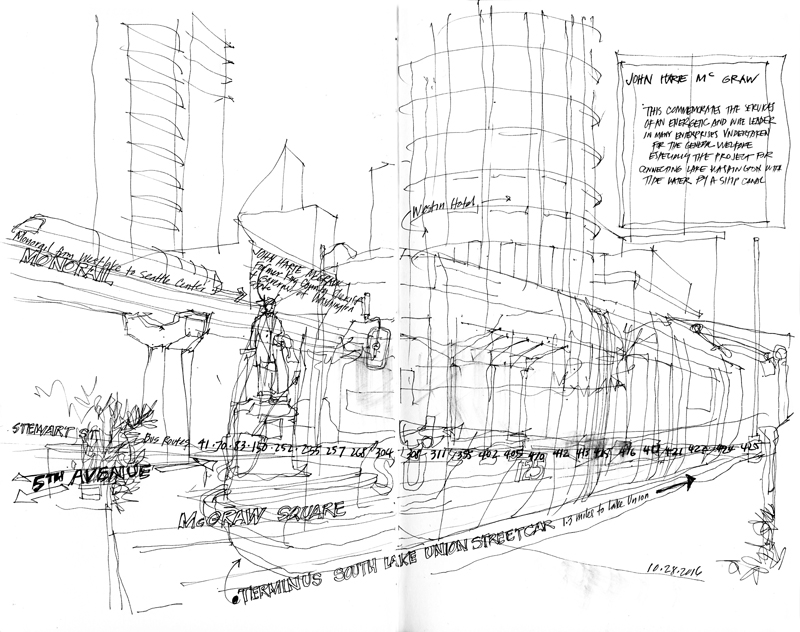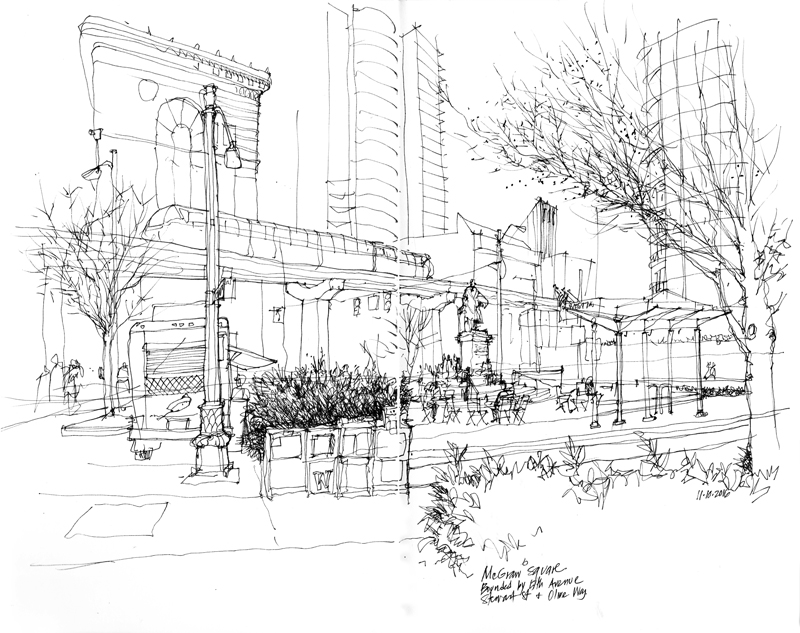A day of mourning…
A Pachinko Parlor in Tokyo
Happened to watch an episode of the new NBC game show, The Wall, which reminded me of this pachinko parlor in Tokyo. The Wall features an oversized version of the pachinko board, which operates like a vertical pinball machine. In pachinko, one or more steel balls are launched to the top of the playing field, which is filled with brass pins. Entering the field at the top, the steel balls fall freely, bouncing and careening from one pin to another, and finally entering one of several cups at the bottom. Upon entering a pachinko parlor, one is greeted with the chime-like sounds of the falling steel balls from hundreds of pachinko machines.
Iolani Palace
While the recent cold snap is easing a bit here in Seattle with temperatures returning to the upper 30s, I still miss the warmth and fragrance of Hawaii. During our recent trip there, I did this quick 20-minute sketch while waiting for the weekly Friday performance by the Royal Hawaiian Band on the grounds of Iolani Palace. King Kamehameha III founded the brass band in 1836, which is now considered to be the oldest, full-time municipal band in the U.S. I still remember as a child growing up in Honolulu attending their Sunday afternoon concerts at the Kapiolani Park Bandstand in Waikiki.
Happy New Year!
Greetings of the Season
Pacific Place: Looking Up, Looking Down
Today, the Seattle Times had an article in their Pacific NW magazine about the popularity of malls in this area. The piece leads off with the statement that, unlike other parts of the country, “Local malls are…thriving, thanks to Seattle’s strong economy, all the people moving here and the fact that don’t have too many.” And so it was a coincidence that the Seattle Urban Sketchers group met this morning at Pacific Place in downtown Seattle, a vertical shopping mall with a four-story, semi-cylindrical atrium space. The first view is looking up into the atrium while the second view is looking down from the top floor. The third view is a similar view looking down from the opposite end of the atrium, but done 6 years ago.
Honolulu Hale
When Joseph Fern became mayor of the City & County of Honolulu in 1907, he began a campaign to build a permanent city hall. Unfortunately, it was not until 1928, eight years after Fern’s death, that the idea came to fruition. Several local architects—C.W. Dickey, Hart Wood, Robert Miller, and Rothwell Kangeter & Lester—contributed to the design of the Spanish Colonial Revival style structure, which has an interior courtyard, staircase, and open ceiling modeled after the Bargello in Florence.
Originally called the Honolulu Municipal Building, today it is known as Honolulu Hale (Honolulu House) and is the official seat of government of the city and county, including the Mayor’s office and the City Council chambers. In 1978, Honolulu Hale was listed as a contributing property to the Hawaii Capital Historic District, which is listed on the National Register of Historic Places and includes Iolani Palace, Kawaiahaʻo Church, and the Territorial Building.
The Rainbow Bazaar
This is a view of a courtyard in the Rainbow Bazaar in the Hilton Hawaiian Village Hotel in Waikiki, dominated by a huge banyan tree. The resort hotel was originally conceived of and built by Fritz Burns and industrialist Henry Kaiser in 1955 on the site of the old Niumalu Hotel and eight oceanfront acres of the Ena Estate at the Ewa end of Waikiki. Over time, the hotel complex grew to 22 acres and was purchased by Conrad Hilton.
Growing up in Hawaii, my exposure to the world beyond Oahu’s shores was illuminated through books, movies, and TV shows. And so when the Rainbow Bazaar was created as part of the hotel complex in 1970, I was fascinated by the faux Asian environment, which included replicas of a Thai temple and a Japanese pagoda, as well as an entire Japanese farmhouse shipped from Japan. While some may criticize the appropriation of Asian culture to sell ethnic and tourist goods, for me walking through the Rainbow Bazaar even today is an opportunity to imagine and re-imagine visiting foreign places.
Stimson-Green Mansion Revisited
Back in February of 2012, the Seattle Urban Sketchers group met at the Stimson-Green Mansion for its monthly sketching session. Designed by Spokane architect Kirtland Cutter and completed in 1901 for Seattle industrialist C. D. Stimson and his wife Harriet Stimson, the mansion was subsequently purchased by Joshua Green in 1915—hence the name Stimson-Green. When Green died in 1975, the Historic Seattle Preservation and Development Authority purchased the property. After working on its restoration, Historic Seattle sold the property in December 1977 to Priscilla Collins, granddaughter of C. D. and Harriet Stimson, with an easement protecting the main house, carriage house, and grounds from demolition, alteration, or remodeling. In 2001 Collins donated the mansion to the Washington Trust for Historic Preservation, which provides continued stewardship.
This past Sunday, the Seattle Urban Sketchers were able to return to the Stimson-Green Mansion, thanks to Julianne of the Washington Trust for Historic Preservation. After walking through the various rooms on all three floors, I decided to redraw the same view I had done four years ago—looking out from under a Romanesque style arch at the central hall. The space ascends the main stairway to the upper two floors and extends back to a warm, sunny dining room on axis with the front entry foyer.
In comparing the two drawings, one can see how the absorbency of the paper surface matters a lot when drawing with a fountain pen. In the earlier drawing, directly above, the ink lines tended to bleed and so I was discouraged from drawing too finely. In the second drawing, shown first, the paper coating allowed for finer lines and suggestions of details.
McGraw Square Revisited
I returned to McGraw Square last week but instead of finishing my original sketch, I decided to annotate it and to redraw the square from a different perspective. I simply moved back about eight feet from my original position and in doing so, dramatically altered both the field of view and the drawing composition. This illustrates how the decision about where to position oneself is an important one when drawing on location and should not be taken lightly.

